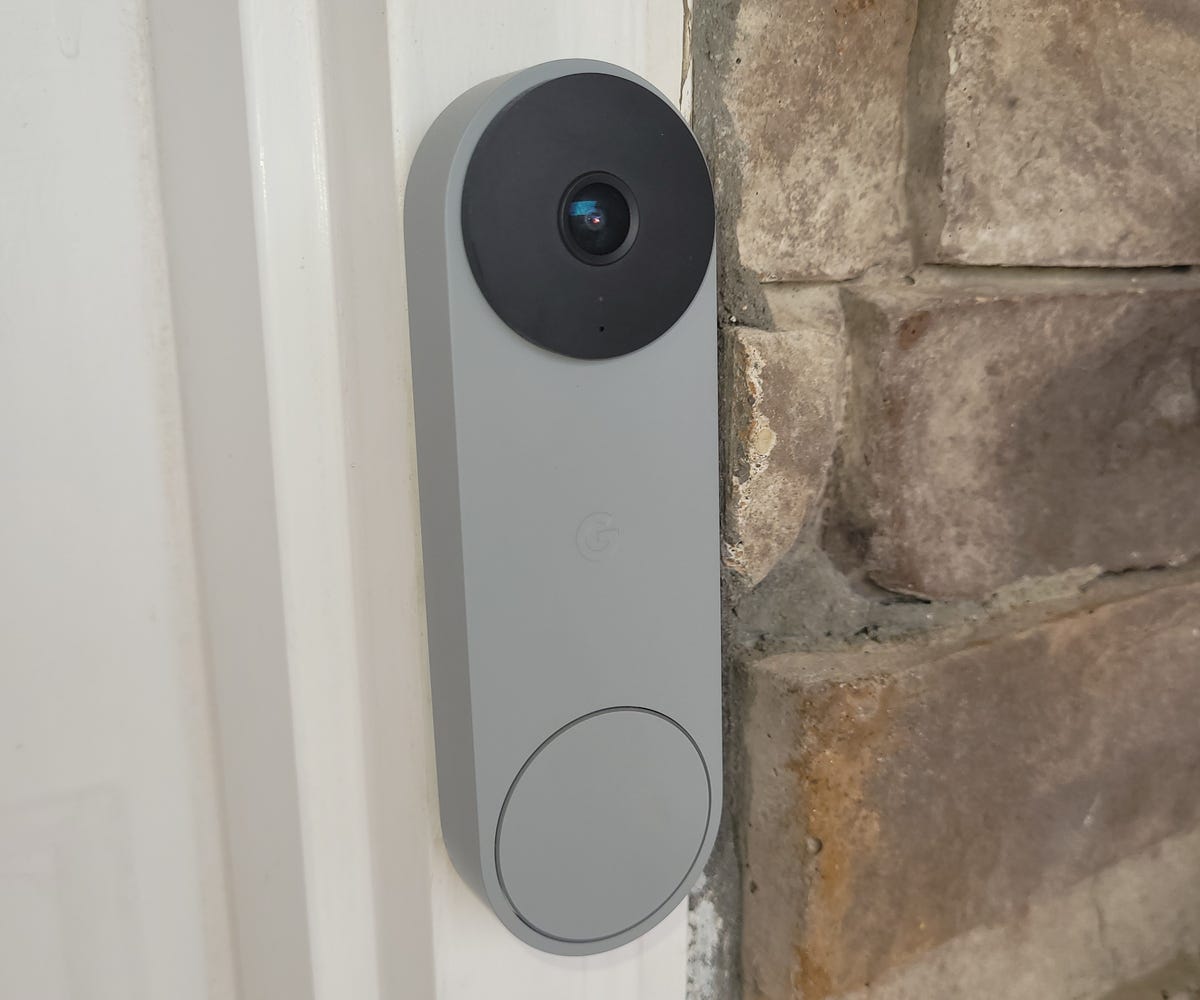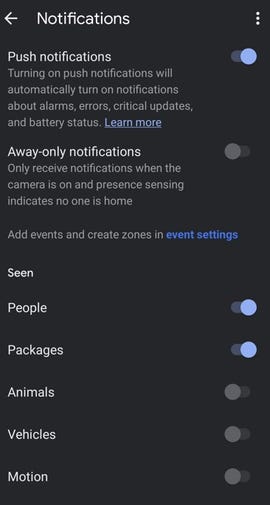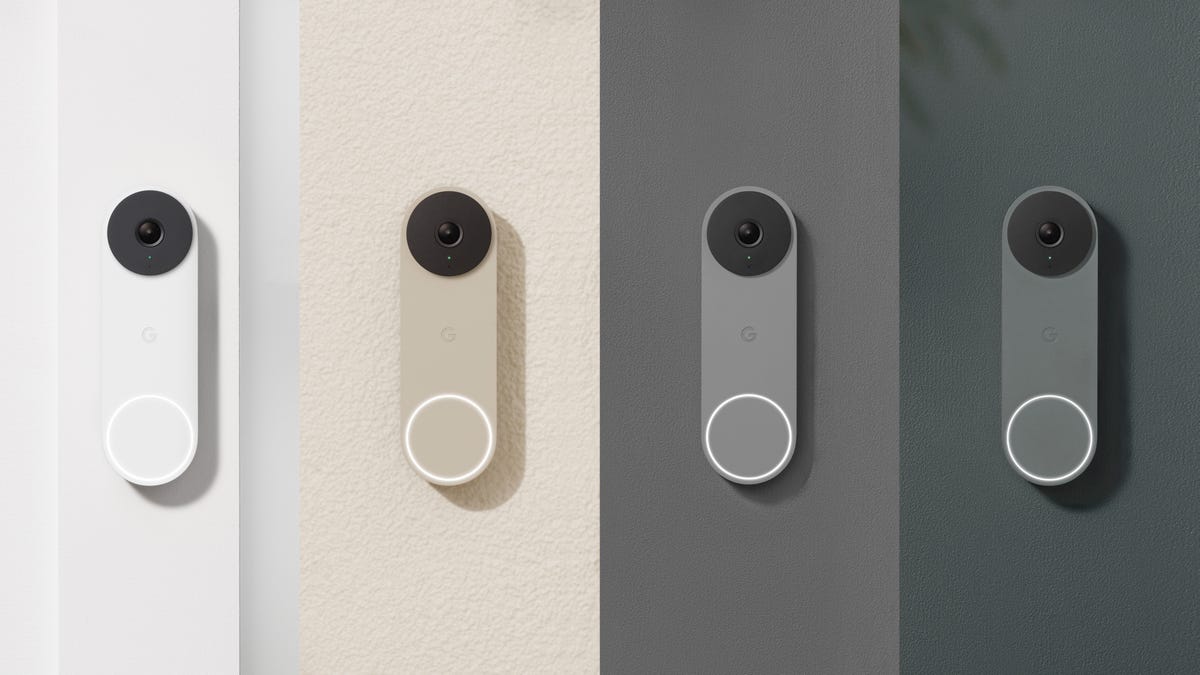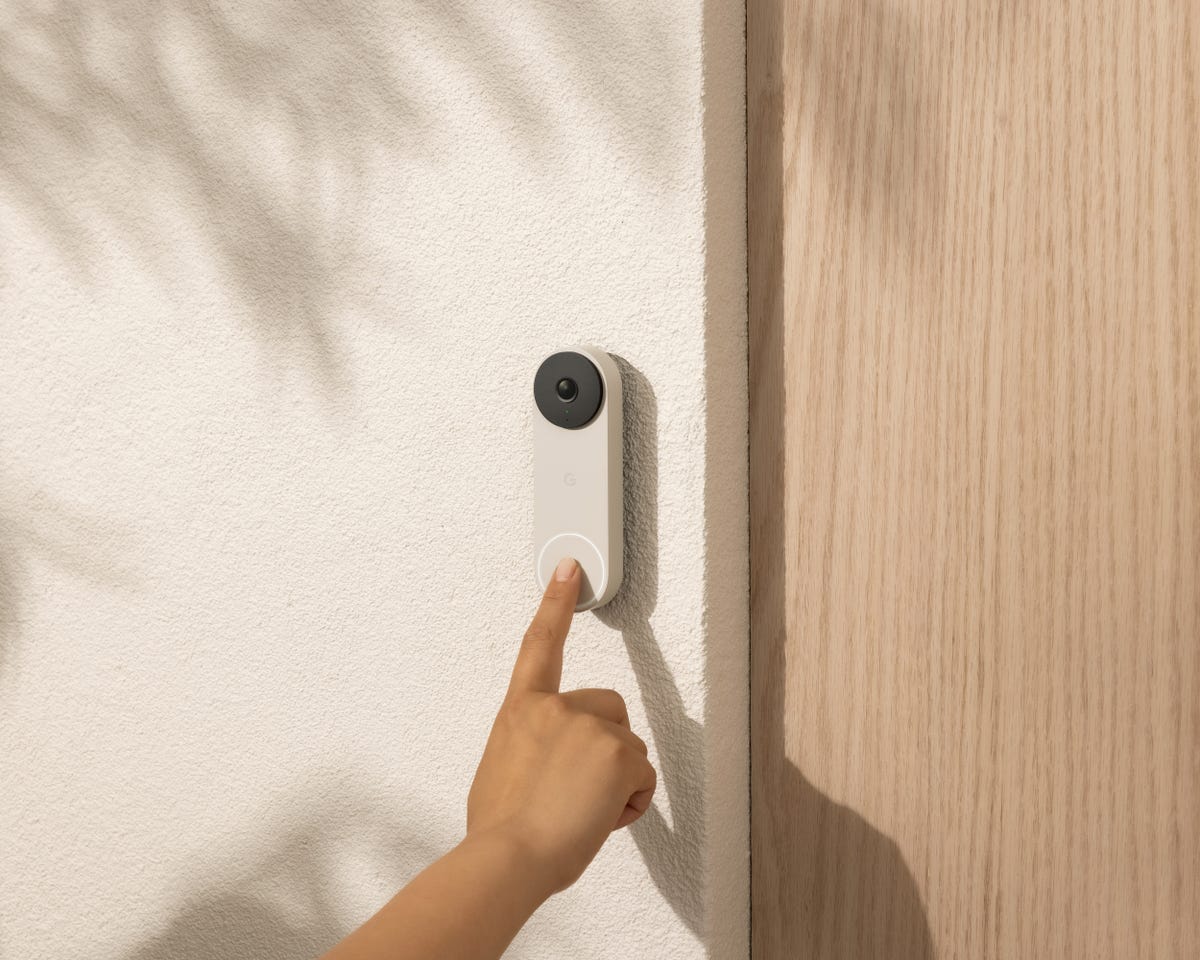Like
- High-quality audio and video
- Lots of customizable settings
- Free cloud storage up to three hours
- Compatible with Google Assistant and Alexa
Don’t Like
- Recorded events automatically delete after 3 hours
- Somewhat limited field of view
Google built on the design and features of its Nest Doorbell with Battery to create a second generation doorbell. Unlike the first generation, where the wired and wireless versions were significantly different, the second-gen devices, both wired and with battery, have the same look and features.
There’s a lot to like about this next-gen video doorbell but, as with any smart home device, it isn’t totally free from flaws. After a week of testing, I encountered minor pain points such as the brief 3-hour window to watch recordings and a slightly limited field of view, but I wouldn’t consider any of them to be deal-breakers. They are something you’ll want to be aware of before purchasing, though.


Even with a few imperfections, the new, hardwired Nest Doorbell is a decent value at $180. It’s not the cheapest video doorbell you’ll find — older models from Arlo and Wyze, for example, are less expensive, as are the cloud storage subscriptions. Even so, if you favor Google devices and you’re eager for a user-friendly, feature-stacked home security upgrade to your front porch, you’ll likely find the newest Nest Doorbell to be worth the cost.
I should note that Google also released a second-gen battery-powered Nest Doorbell along with the wired version. The two devices share similar functionality and the same $180 price tag, though the battery-powered version is about an inch longer at 6.3 inches.
With that in mind, you could largely apply my findings from testing the wired version to both devices (other than installation, more on that in a bit). So, if you’re interested in either, read on for a full breakdown of what to expect.
Video and audio quality
Sporting a 1,280×960-pixel resolution with HDR and clear night vision, the second-gen Nest Doorbell’s video quality is as good as any. I could see everything from my front porch and beyond in great detail pretty much any time of day. Colors are bright and vibrant when it’s light out, and shapes and movement are discernable at night, even without any lights on.
However, like we discovered with the previous-generation Nest Doorbell, I found the 145-degree diagonal, 3:4 ratio field of view to be somewhat limited, at least horizontally. If your doorbell is like mine and positioned six inches or more away from the door, the camera view may not fully capture people or packages directly in front of or slightly to the far side of the door when it’s mounted flush to the wall or doorframe.
Google seems to be aware of this minor problem as well. To remedy the issue, the packaging comes with a 20-degree wedge mount to better angle the doorbell and camera toward the door. After installing the wedge, I had a sufficient view of everything in front of the door.
As for sound quality, I could clearly hear someone speaking or the thud of a package being dropped off and the sound quality wasn’t overly disrupted by background noises like the wind or a car passing by. Similarly, anyone on the porch could hear and communicate with me over the two-way audio without issue.
About those smart alerts and recorded history


You can customize the second-gen Nest Doorbell to watch for people, packages, animals, vehicles or any motion at all, restricting the recordings and notifications to only the events you want to see. I started out by selecting all alert options, but after a day of numerous notifications, I switched it to just people and packages.
In any case, the smart alerts were smarter than I expected. For example, the “People” alert setting sent notifications and recorded video when anyone walked up to the door, of course, but also when someone walked along the sidewalk in front of my house. It wouldn’t, however, bother me with a notification when my neighbors just across the street were getting into their car or playing in the yard, even though they were certainly visible in the camera feed. The “Packages” setting showed similar smarts and sent a notification not only when a package was delivered but also when someone picked it up.
By default, the Nest Doorbell 2nd gen (wired) is set to automatically record video of all your selected events and store them for up to three hours. Audio recording is not on by default, but you can activate it under the device settings if you want recorded audio along with video. If you don’t want or need either, simply turn off event recording in the device settings.
The free recording feature is nice, but as we noted before with the first-gen Nest Doorbell, it does little good past that three-hour window. If your doorbell captured activity at 3 in the morning but you didn’t wake up and see the notification until 7, that recording will have already been deleted.
For 24/7 recording and a longer duration of saved activity, you’ll need a Nest Aware subscription. Starting at $6 per month, Nest Aware includes 30 days of event history storage (but no 24/7 recording). For double the subscription cost, you can upgrade to the Nest Aware Pro plan and get 10 days of 24/7 recording and 60 days of event history storage.
If you opt for 24/7 video recording, keep in mind that the Nest Doorbell is connected to your Wi-Fi and could potentially use a significant amount of data. Google notes that a month of 24/7 recording could use as much as 300GB of data, something to keep in mind if your internet provider has a data cap.
Other customizable settings
Another unique perk of Nest Aware is Familiar Faces, a facial-recognition feature that can alert you to who, specifically, is at your door. Other extras that come with Nest Aware include sound detection for smoke alarms or broken glass and the ability to call 911 from the Google Home app in case of an emergency.
But let’s say you don’t want to sign up for a $6 or $12 monthly Nest Aware subscription, what else comes with the standard doorbell? A sure crowd pleaser: themed doorbell rings.
Specifically, the Nest Doorbell 2nd gen comes with seven ring themes including the traditional “ding dong,” “happy birthday” and others along with limited-time seasonal themes. As of this writing it’s about a week out from Halloween and yes, I am genuinely excited for the Nest Doorbell to greet my trick or treaters with ghostly boos and spooky music when they ring for candy.
To clarify, the themed rings only play for your visitors. Your indoor chime is the standard “ding dong” regardless of the outdoor ring, though you can adjust how long the indoor chime lasts or mute the chime altogether in the device settings.
Design and installation
The features are impressive with Google’s hardwired, second-gen Nest Doorbell, but I must say I’m a little indifferent to the design. Google toned down the glossy, high-tech look of its previous wired doorbell in favor of a more modest, almost muted, design.
The change seems intentional (Google notes it is “designed for simplicity”) and I do appreciate how the softer look and four color options — ash, ivy, linen and snow — help the doorbell blend in better with any home exterior. The color I selected, ash, matches my home well, but I’d liken its appearance to that of the key fob pad at my neighborhood pool. Something less utilitarian might have been a better fit for a $180 device.


The Nest Doorbell comes in your choice of four colors: snow, linen, ash and ivy.
GoogleAnother thing to consider: Do you want your video doorbell to blend in? Granted, a good smart device should complement your home and go virtually unnoticed, except maybe if said device is intended in part for home security. I’d argue that a flashy video doorbell might serve as a more recognizable and effective deterrent to potential porch pirates or intruders than a discreet one.
So I’m not totally in love with the design, but I’ll admit it does allow for a quick and easy installation. The Google Home app walked me through a series of easy-to-follow, step-by-step instructions from beginning to end. Other than spending a few minutes figuring out which switch in the electrical panel controlled the doorbell, the only hiccup I encountered was with the doorbell wiring.
The wiring setup is a good inch or two longer than I needed it to be and connects to the doorbell wiring via two somewhat bulky connectors versus just twisting the wires together. It definitely simplified the wiring process, but since the doorbell has to be flush with the mount to fit properly, I ended up having to stuff the excess wiring and connectors into the hole for the doorbell wiring. If the existing hole isn’t large enough, you may have to do like I did and get the drill out to widen it. A minor inconvenience, but one you may encounter just the same.


Summing it up
Whether you find the design to be appealing or not, there’s no denying that the features and smart technology that comes with the second-gen Nest Doorbell (wired or battery) are impressive. It’s not the cheapest video doorbell on the market, but I’d say the video and audio quality, customizable alert and ring settings and compatibility with Google Assistant and Alexa devices more than justify the cost.


